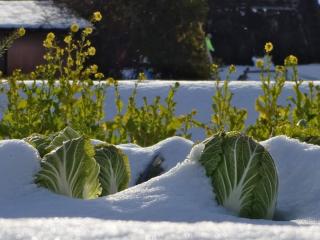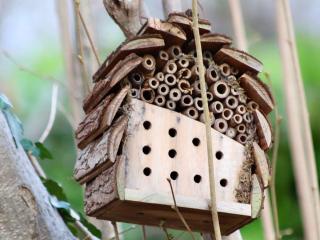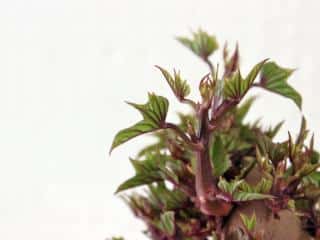

Even though winter might seem like a waste of time for your permaculture vegetable garden, many tasks still need tending to. Most of all, this quiet, dormant time is the perfect opportunity to prep your garden for the vibrant spring season that’s just around the corner.Wondering what to do in a permaculture garden in winter?
Here’s how you can keep busy!

It’s also a great time to focus on cuttings for blackberry, red currant, blackcurrant, fig, willow, and even grapevine.

Similarly, you can sow apple and pear seeds in small pots. Place these outdoors, exposing them to stratification for effective seed germination.
A good permaculture mulch is crucial during intense cold. So, renew your mulch around perennials regularly to protect their roots. Use organic material like straw, dead leaves, branches, shredded material, or even hay.
The permaculture gardener’s tip:
Always cover growing areas with mulch in winter, even if there’s no planting. You can also spread not-yet-ripe compost. January is also a great time to scatter fireplace ash on the soil, at a rate of a handful per square meter (never more).
Even as days start to stretch, February still ranks as the coldest month. Hence, take it easy, cozy up, and inventory your stash of seeds. Now’s a good time to order and replace them, if needed. Also, take a look at last spring’s permaculture design, tweak and revise, learning from setbacks.
→ It’s high time you got your sowing calendar in order.
The permaculture gardener’s tip:
Try creating your own soil mix, blending 30% garden soil, 30% sieved humus, and 40% sieved, mature compost.
Though not always a must-do, some trees might need a trim.

→ Want more ideas? Shelters for small critters
By late February, sow fava bean and pea seeds directly at base of trees for their nitrogen-fixing properties.

Get those potatoes germinating, simply storing them in a lighted place but away from direct sunlight does the trick.
Come March, there’s a lot you can start sowing in pots and on hot beds, such as many summer veggies and fruits like tomato, cucumber, bell pepper, watermelon, melon, and eggplant.
In a cold greenhouse, sow cauliflower, spinach, leek, lettuce, and broccoli seeds. Outdoors, start sowing of lettuce, radish, parsnip, pea, fava bean, and turnip.
Activity begins to ramp up in the vegetable garden as well. Plant Jerusalem artichoke, cabbage, lettuce, shallot and onion sets, and some herbs like thyme, rosemary, sage, tarragon, chives, and summer savory.
→ To go further: